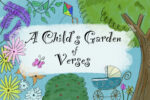Building on “the princess saves herself in this one,” Amanda Lovelace’s book of poetry, “the witch doesn’t burn in this one,” lets any woman who has ever felt the sting of the patriarchy — whether emotionally or physically — know that her anger is justified.
More poignantly, the book concerns itself with sexual assault and rape culture, leaving readers with an awe-inspiring read that produces tears, rage and warmth. So, why doesn’t the witch burn?
The collection begins with dedications to the “girl on fire” and all the “princesses, damsels and queens” who have “rescued themselves.” The tropes are about to be turned on their heads, so get ready before diving head first into this read.
In “the witch doesn’t burn in this one,” warnings and prophecies (wonderfully carrying the witch motif) precede each of the four parts of the collection, which is not a witch tale but simply a “story where women fight against the manmade structure that has long overstayed its welcome.”
In Part 1, “the trial,” readers encounter the book’s first lesson: “they should be afraid of us,” a theme she reflects in many of the section’s poems. In one, she writes, “women are considered to be possessions before we are ever considered to be human beings.”
This quote is followed by two poems, titled “survival” and “survival II,” because women have had to focus on just “surviving” for so long, and still do. The means might be different nowadays, i.e. holding your car keys in your fist as you walk at night or abandoning a drink you’ve taken your eyes off of, but the idea is the same.
On a basic level, women are taught to be on guard. The same can be said for the witch, who is persecuted only for taking up her own allotted “portion of the sky” and never being forgiven.
The first section ends with “coven rule # 1,” “always put yourself first. sacrifice at your own discretion.”
https://www.instagram.com/p/BtPKxbWnsI_/
The next section, “the burning,” turns the collection’s focus inward, onto women’s bodies. As Lovelace details, the world tries to burn women simply for being female.
In her poem “abuse is nothing to romanticize,” Lovelace criticizes the social norms that have shaped how society views women and how women view themselves. She writes, “I am not the one who had to change the way I think or the way I act. They are.” The section ends with a second coven rule, “burn whoever tries to burn you.”
In Part 3, “the firestorm,” Lovelace sets introspection aside and turns the focus outward; “you” becomes the priority in this section. Women who “hex any man who catcalls” them take over.
This section contains the poems “reclaiming,” “self-love” and the “witch girl gang,” and ends with “coven rule #3”: “make no apologies; accept no apologies.”
Finally, the book enters its fourth section, “the ashes.” Poetry and its power take center stage in this final part of the collection, a section that focuses on the “the thing that leads us into this revolution” and what “leads us carefully back out.”
The section, as a whole, turns poetry into protest and is filled with beautiful homages to other works, including Margaret Atwood’s “The Handmaid’s Tale” and Christina Rossetti’s “Goblin Market.” The final chapter shows readers that the ashes, the aftermath of protest and spoken word, are only the beginning.
Lovelace’s concluding thoughts in “the witch doesn’t burn in this one,” despite being in a work that revels in anger, also point at the hope all around us. “didn’t you know there could be shelves upon shelves upon shelves of books written about your strength?” she writes. This poem, the penultimate piece, is aptly titled, “as always, the women save themselves in this one.”
Even more appropriate is the last coven rule Lovelace provides her readers: “know that anger has its limits & act accordingly.”
There are so many reasons to be angry as a woman, especially for those who have undergone the pain Lovelace speaks to in her poetry. She agrees that women have the right to rage. Yet, her concluding words in “the witch doesn’t burn in this one” remind readers that the fire has to be harnessed to change the “stories” and “fairytales” we have been taught as women.
This collection goes straight for the heart and never shies away from the painful. So, brace yourself and dive straight into a world of poetry that is magical yet real, and decide for yourself why the witch doesn’t burn.
















